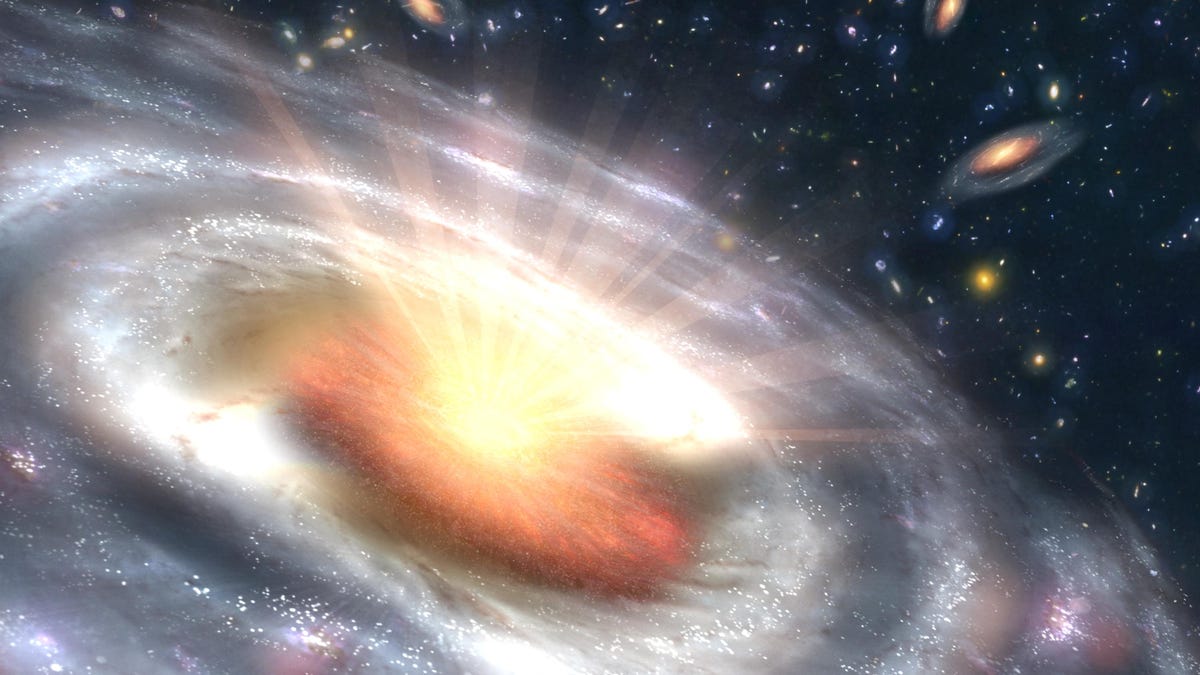NASA Webb Telescope Spots Giant Galaxies From Not Long After Big Bang
"These objects are way more massive than anyone expected."

An artist's rendition of what galaxy formation in the early universe may have looked like.
Scientists used new observations from NASA's James Webb Space Telescope to find a half dozen galaxies from not long after the Big Bang. The distant masses of stars are so gigantic they could force a rethink about the very origins of galaxies.
"These objects are way more massive than anyone expected," Penn State astronomy professor Joel Leja, said in a statement. "We expected only to find tiny, young, baby galaxies at this point in time, but we've discovered galaxies as mature as our own in what was previously understood to be the dawn of the universe."
The galaxies appear to be about 13 billion years old, meaning they were already mature just 500 million to 700 million years after the Big Bang.
"The revelation that massive galaxy formation began extremely early in the history of the universe upends what many of us had thought was settled science," Leja said. "We've been informally calling these objects 'universe breakers' -- and they have been living up to their name so far."
The galaxies are so big that they appear to be impossible under 99% of the models for the early universe, Leja said. It's just way more mass so shortly after the Big Bang than most of the math can account for.
The next-generation Webb observatory is allowing scientists to glimpse much further back in cosmological time than they were previously able. The international team of astronomers behind this discovery worked with data from the first batch of observations Webb made last year. Their findings are published in this week's issue of the journal Nature.
"When we got the data, everyone just started diving in and these massive things popped out really fast," Leja said. "We started doing the modeling and tried to figure out what they were, because they were so big and bright. My first thought was we had made a mistake and we would just find it and move on with our lives. But we have yet to find that mistake, despite a lot of trying."
Images of six candidate massive galaxies, seen 500 million to 800 million years after the Big Bang.
It's still possible that the researchers are actually seeing something else, however.
Theoretical physicist Ethan Siegel, who wasn't involved with the research, points out that to confirm the age and size of such massive galaxies requires a more detailed look at the light emitted by them via a tool like infrared spectroscopy.
"Without spectroscopy, these objects are only 'high redshift candidates,' which means they may be confirmed to be from very early on in the universe's history, but they could also be (and likely, at least some of them are) intrinsically reddened galaxies that occur much later in the iniverse," Siegel said in an email. "Nevertheless, JWST is teaching us that galaxies appear to grow up faster and look more evolved at earlier times than most astronomers had expected."
Leja concurred and emphasized that they are trying to remain open-minded.
"I think there is a real possibility that a few of these objects turn out to be obscured supermassive black holes," Leja said. "Regardless, the amount of mass we discovered means that the known mass in stars at this period of our universe is up to 100 times greater than we had previously thought. Even if we cut the sample in half, this is still an astounding change."

